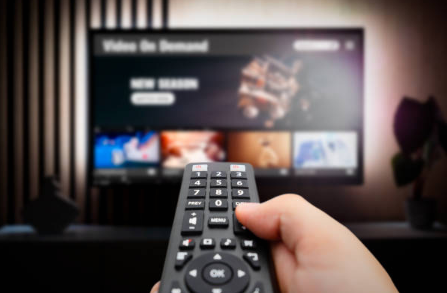Over the past decade, the way people watch television has undergone a dramatic transformation. The days of flipping through cable channels, waiting for a favorite show to air, or dealing with rigid schedules are rapidly fading. In their place, streaming TV hot player has become the dominant force in home entertainment. With its cost-effectiveness, user-friendly flexibility, unmatched convenience, and expansive, diverse content offerings, streaming TV has proven itself to be the best option for modern viewers seeking control, variety, and value.
One of the most compelling reasons for the rise of streaming TV is its affordability. Traditional cable television can cost anywhere from $70 to over $150 per month, depending on the package and provider. These packages often include dozens of channels that go unwatched, forcing consumers to pay for content they don’t use. In contrast, streaming services offer much more affordable options. For example, Netflix, Hulu, and Amazon Prime Video offer monthly plans starting around $7 to $15, and users can choose to subscribe to one or more based on their preferences. Additionally, some services such as Tubi or Pluto TV offer free content with occasional advertisements. This flexibility allows users to control their expenses and tailor their subscriptions to their viewing habits.
Beyond affordability, streaming TV provides unmatched flexibility that traditional television simply cannot compete with. Streaming services allow users to watch what they want, when they want. There is no need to plan one’s schedule around a show’s air time or worry about setting up DVRs to record missed episodes. Viewers can binge-watch entire seasons in one sitting or watch a single episode on the go. This kind of control is particularly valuable for people with busy or irregular schedules. For example, a nurse working night shifts can catch up on their favorite series during the day, while a student can stream educational content or entertainment between classes.
Another major advantage of streaming is the convenience and portability it offers. As long as users have a reliable internet connection, they can stream content on a variety of devices—smart TVs, laptops, smartphones, tablets, and even gaming consoles. This multi-platform accessibility means that entertainment is no longer confined to the living room. Whether on a long flight, in a waiting room, or commuting on a train, users can watch their favorite shows and movies with just a few taps on a screen. Cloud-based streaming also removes the need for physical media or bulky hardware, making it even easier to access entertainment anytime, anywhere.
Streaming TV also provides a wider and more diverse selection of content than traditional cable. Most streaming platforms offer extensive libraries that include classic TV shows, blockbuster movies, indie films, documentaries, international series, and even interactive experiences. What’s more, major streaming services like Netflix, Amazon Prime Video, and Apple TV+ are investing billions of dollars into producing original content. Critically acclaimed shows like Stranger Things, The Crown, Ted Lasso, and The Mandalorian are exclusive to their platforms and have become cultural touchstones in their own right. These original productions rival—and in many cases surpass—what’s offered by traditional TV networks, both in terms of quality and storytelling.
The global reach of streaming also allows for greater inclusivity and cultural diversity in programming. Viewers now have easy access to content from other countries, including Korean dramas, British comedies, Japanese anime, and Indian thrillers. This exposure helps foster greater cultural understanding and allows smaller or foreign studios to find global audiences. It also provides representation for diverse communities, which is often lacking in mainstream cable television.
Another area where streaming TV excels is in its personalization and user experience. Most services use algorithms to recommend content based on a viewer’s history and preferences, making it easier to discover new shows or movies that align with their tastes. Streaming platforms also allow users to create individual profiles, set parental controls, and customize settings to their liking. This level of personalization simply isn’t available with traditional broadcast or cable TV, which follows a one-size-fits-all model.
In terms of technology, streaming is at the forefront of innovation. Many services now support 4K Ultra HD, HDR, and Dolby Atmos sound, offering a cinematic experience at home that was once only available in movie theaters. With the rise of smart home devices and voice assistants, accessing content is also becoming easier than ever. Users can ask their smart speakers or TVs to play a specific show, skip episodes, or adjust volume—all without lifting a finger.
While critics of streaming TV often point out issues like subscription fatigue or the need for a stable internet connection, these drawbacks are minimal compared to the overwhelming benefits. Consumers can choose to rotate subscriptions, share accounts within households, or take advantage of free trials and ad-supported tiers to manage costs. Internet access, while still a challenge in some rural areas, continues to expand globally, making streaming more accessible year after year.
In conclusion, streaming TV represents the future of home entertainment—and more importantly, the best choice for viewers today. Its affordability, flexibility, convenience, content variety, and personalized user experience make it vastly superior to traditional television options. As the industry continues to evolve, it is likely that even more innovative features and content will be introduced, solidifying streaming TV’s place at the top of the entertainment hierarchy. For anyone seeking control, choice, and quality in how they watch television, streaming is undeniably the best option.
